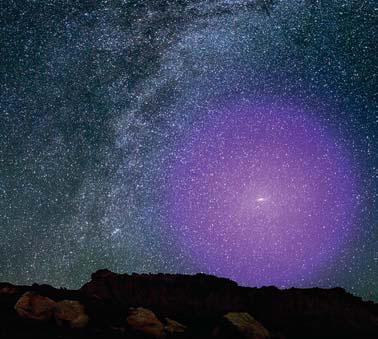Galactic halos are both more massive and more complicated than scientists realised, according to new Hubble observations. The venerable telescope turned its sights on the neighbouring Andromeda Galaxy using dozens of different quasars to map the galactic halo. Andromeda, more formally known as Messier 31, is a spiral-shaped galaxy about the same size of the Milky Way we live in, with about 1 trillion stars. Cosmically it’s right next door, just 2.5 million light years away, which means that Hubble can study its halo in unprecedented detail.

© NASA/ESA
“This is truly a unique experiment because only with Andromeda do we have information on its halo along not only one or two sightlines, but over 40,” said Nicolas Lehner, an astrophysicist at the University of Notre Dame in Indiana. “This is groundbreaking for capturing the complexity of a galaxy halo beyond our own Milky Way.”